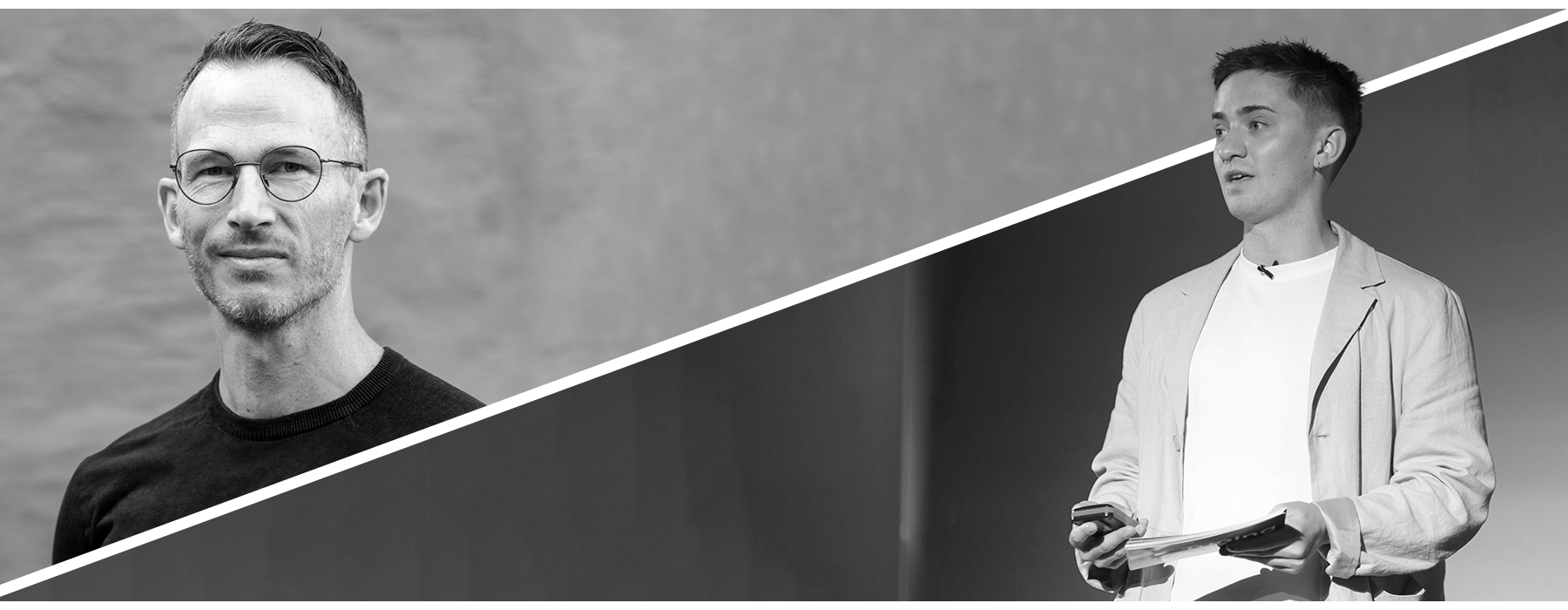It’s an exciting time for OOH, which is quickly becoming one of the last standing broad reach channels

The Two Minute Interview: Ocean Outdoors Jesper Albansson & Andrew Tindall
“It’s a pleasure to be working with Andrew on these columns. He’s provocative, funny and holy hell, he brings the data. You might not agree with him but he sure gets a debate going. If anyone was looking for any inspiration on how to take ad trends and make them engaging, he’s the one to be watching”.
This is how John McCarthy, Opinion Editor at The Drum, described Andrew Tindall in a recent post on Linkedin.
Tindall, Senior Vice President of Global Partnerships of System1, works with the world’s largest brands, creative agencies and media owners to put marketing effectiveness at the core of their businesses, advertising and brands. Moreover he conducts research and publish marketing thought leadership with the company and their partners. He is an award-winning marketer with a strong marketing and commercial background working for large FMCGs, now leading System1’s global partnership strategy and growth, unlocking the potential of their world-leading effectiveness database.
Andrew is putting out quality content, thought pieces and referencing System1 and his own research at an incredible pace. With access both to a huge effectiveness database and colleagues like Orlando Wood and Jon Evans his source material is quite unique. In this next Top Voices special we are talking brand building, advertising testing, advertising trends and his Out Of Home research.
Question 1: Thanks for taking the time Andrew. I would like to start with brand building, an area that is back on the menu and where not only influential voices like Mark Ritson and Les Binet are advocating it. You have looked at advertising wear out. Any insight to share related to brand building advertising?
AT: Brand building is nothing new but our knowledge, the media landscape and way of working has rapidly changed since the long and short of it came out ten years ago. For marketers to get it right, they need to really understand each media channel’s strengths and weaknesses AND what creative looks like to create effects that lasts within that channel.
This is why OOH is special. EssenceMediaCom recently shared my favourite media research in a while on what the media choice itself says about a brand. OOH has high social and health signals, it’s also relatively high attention and affordable CPM. It’s got the hallmarks of a brilliant brand building medium. Yet a lot of growth in the channel seems fixed on driving the bottom of the funnel – screens close to purchase, price and relevance messaging and heavy product feature focus. Sure, this efficiency objective works but what a shame that more marketers aren’t using OOH to build brands.
To get there we need to dramatically change the creative to achieve lasting effects. It needs to become more “right-brained”. Cultural, emotional, human. It needs to become broadly interesting and enjoyable. The best way to achieve this is often ensuring your creative is consistent across channels.
It’s an exciting time for OOH, which is quickly becoming one of the last standing broad reach channels.
Question 2: For many in the industry, System1 has become a reference point for advertising testing. Could give an overview of the areas you are testing, the methodology and what the scoring tells us?
AT: We measure the creative effectiveness of ads. That’s not the effectiveness of campaigns, it’s the POTENTIAL effectiveness of campaigns. It might be the best ad in the world but if you drop the ball on your media planning, price, place (distribution) and product or innovation – you’re campaign will struggle to make the right impact.
So, we predict the long and short-term effects of a campaign assuming a certain amount of media spend modelled on data from the IPA and our clients. We do this for audio, digital, TV and OOH ads. A nationally representative crowd of people from the market we are testing in (and we test all across the globe) tell us how they feel, why and brand data whilst being exposed to the creative. We model out now-famous Star, Spike and Fluency metrics with other qualitative information to help marketers predict and understand how well that ad can do. Both at capturing demand in market now, and creating future demand.
Marketers are often too functional when trying to understanding how their ads work. It’s rather simple, the more people feel the more they buy.
Question 3: There are trends in advertising and then there are certain aspects or areas that might not always be used but nevertheless reoccur. Typically this is use of celebrities, purpose and humor. Are there more of these reoccurring areas/themes that you find in the System1 database and have you done any research on which of them that are of most use from an effectiveness perspective?
AT: Generally, the use of celebrity is increasing. Humour looks to be stagnant now, after a huge decline. And “social purpose” had its boom but most marketers have dialled this back to an actual consumer goal.
I can confidently comment on the effectiveness of two of these three. Celebrities and humour must make the ad effectiveness increase to work, so System1 should be able to see difference. Sure, you get some more earned reach with celebs sometimes but arguably there are cheaper ways of doing this.
I see no general evidence that the use of celebs work. Sure, there are campaigns that have used celebs and it’s worked. But there are plenty of campaigns that use celebs that don’t work. Generally campaigns with celebs have the same brand recognition as those without and see no difference in emotional reaction. In fact, what we do see are the key associations getting messier. Celebs bring their own equity and baggage, often watering down messaging. We’ve shown humour increases effectiveness (with the IPA) and is a key emotion at driving long-term effects.
Now, purpose. I’d lean on Peter Field’s work with the IPA. Arguably you should be able to use purpose to make a brand fulfil an emotion benefit for consumers, by making marketing more emotional and effective. But this can go either way. I think marketers over estimate how simple consumer needs are.
I’m convinced Who Gives a Crap (toilet paper) works because they make a very dull product distinctive, convenient and beautiful, which gives it value. There’s ENOUGH of a purpose to cancel out any worries of wasting paper. When I’m wiping my ass, I’m not worried about trees. I’d rather not tear down trees for paper though. So it’s being purposeful ENOUGH but the usual laws of marketing still apply. Maybe there’s evidence that these associations are actually key drivers of purchase for consumers segments but I imagine these groups would be a 1%.
Question 4: In a recent article in the Drum you referenced Orlando Wood’s meta-analysis aimed at understanding what drives market share growth. Did anything surprise you when looking at the findings?
AT: Yes. Advertising is often called a weak force but Orlando’s meta-analysis of 4000 campaigns in the IPA database (representing half a trillion on consumer spend…) showed media (ESOV) and emotion (our Star Rating) explains about half of long-term market share changes. The predictive model using both these metrics has an R-Squared of 0.48.
The reaction to this is why formal marketing education and training should be mandatory for anyone in control of a budget above 50p. I see some marketers say either:
1) “What? That’s like guessing or flipping a coin?!”
No, that would be a probability of half. It’s a regression model showing it explains half of market share changes. The fact the other 3 Ps explains the other half is an insane vote of confidence in advertising.
2) “Correlation does not cause causation!”
These people have obviously been learning stats off TikTok. That would be an R, not R-Squared. The latter reveals the explanatory power of a model.
Question 5: You’ve lead an in depth study on OOH and attention where several interesting findings were revealed. Could you tell a little about what you looked at?
AT: Yes, I worked with Lumen and JCDecaux UK. We measured about 100 OOH digital (D6) posters for attention and emotional and brand reaction, using System1’s Test Your Ad tool.
Question 6: Which were the most interesting findings and how do you recommend advertisers and creatives can use them to create more effective Out Of Home advertising?
AT: We revealed that posters get an average of 2 seconds of attention. This really informs what I call the “creative realities” of OOH. You need to be simple, brand bold and have no clutter. You have to brand at the top of the poster to boost recognition as well. Keeping consistent across the mix and using brand characters is also crucial. There should really be no more than 8-10 words involved. You then know the “realities” that you can be creative within.
